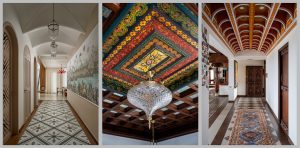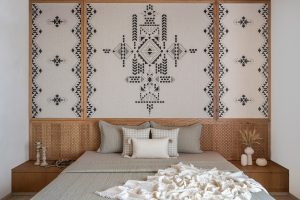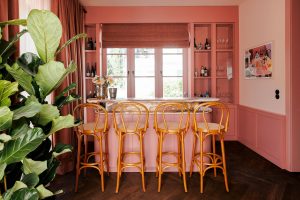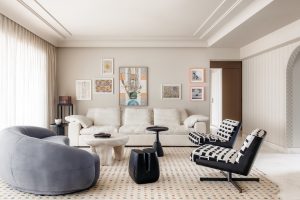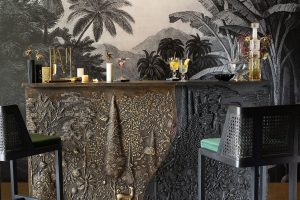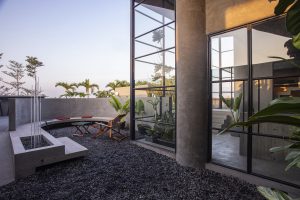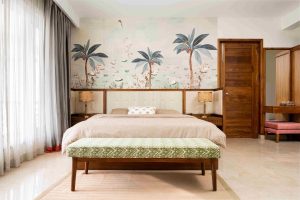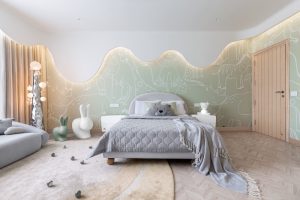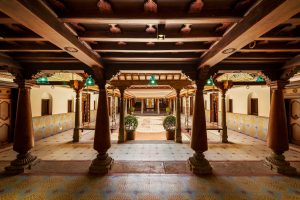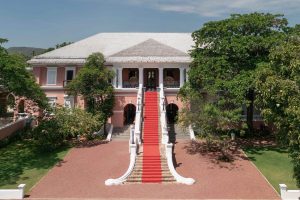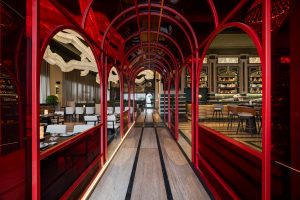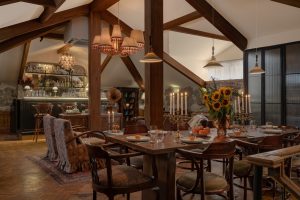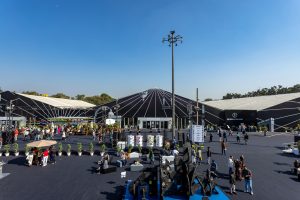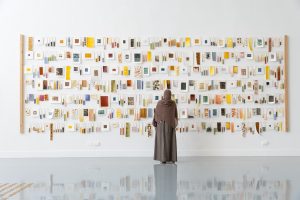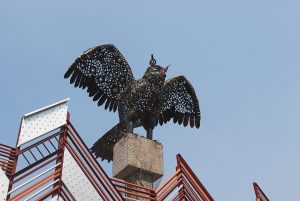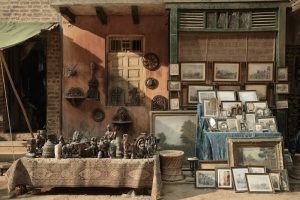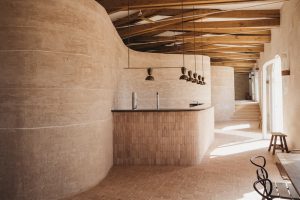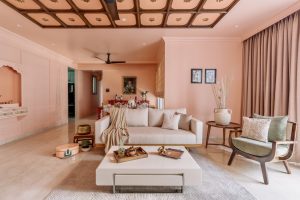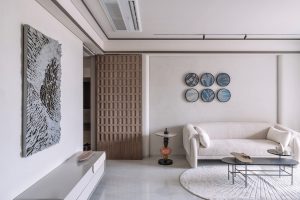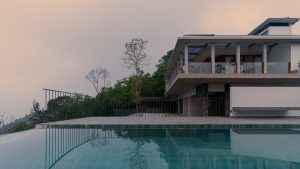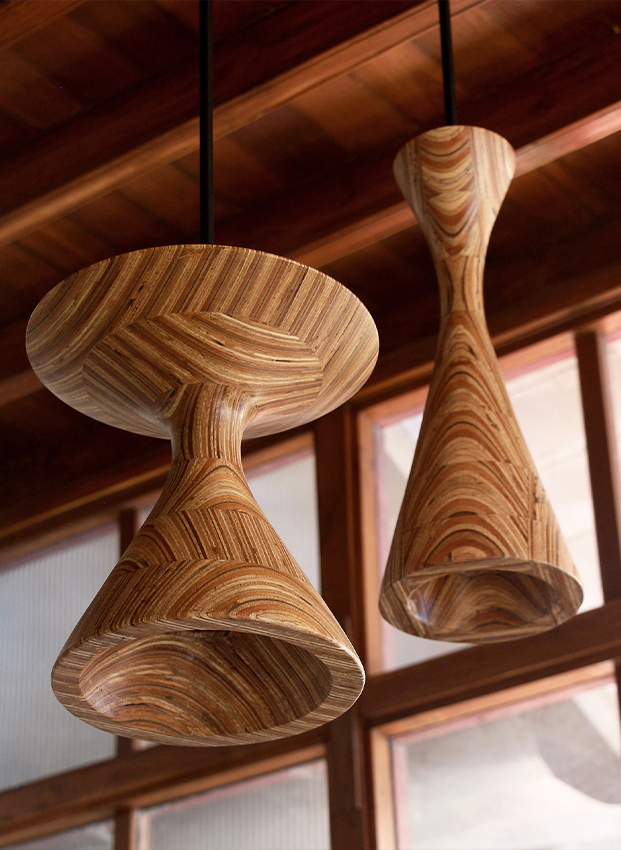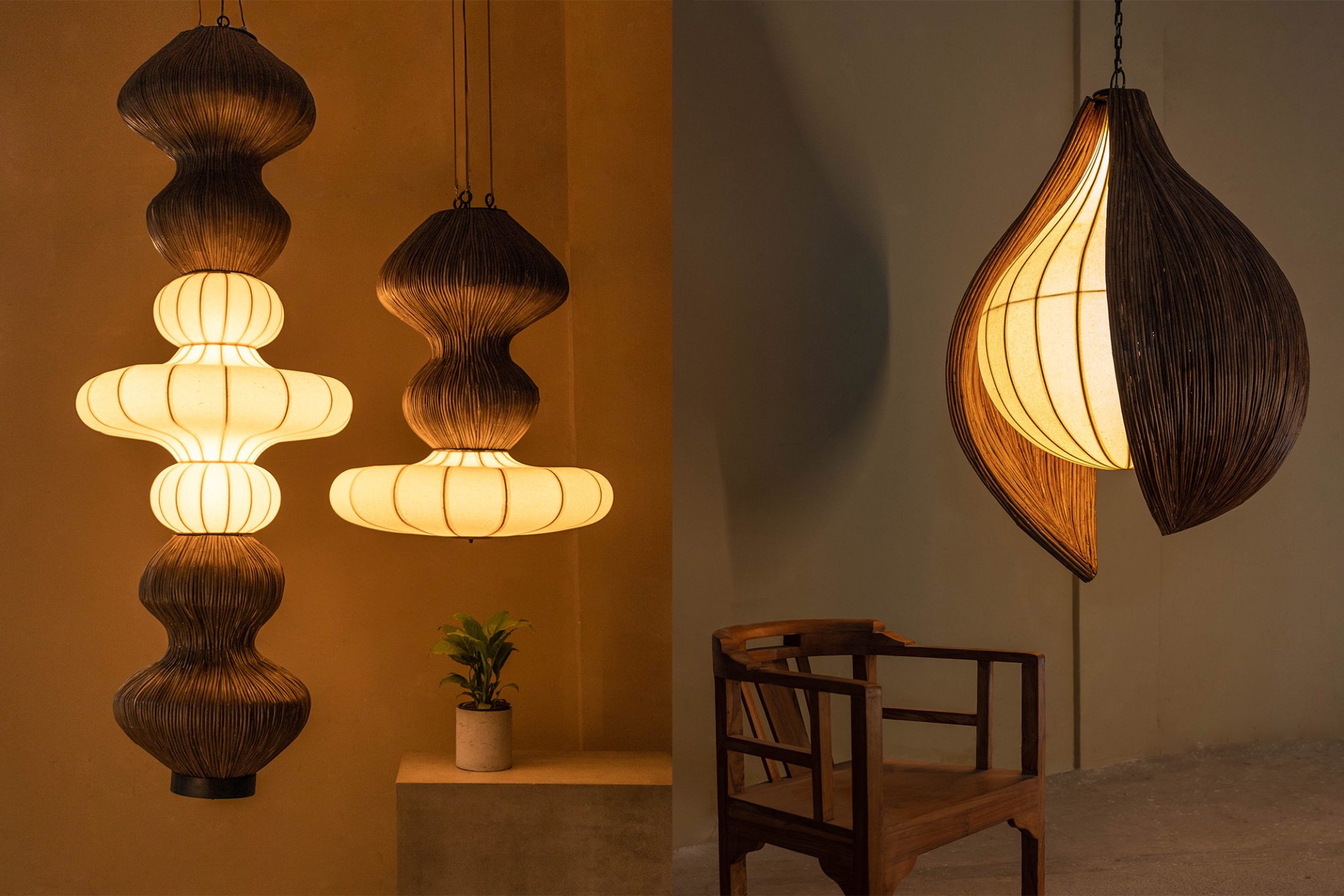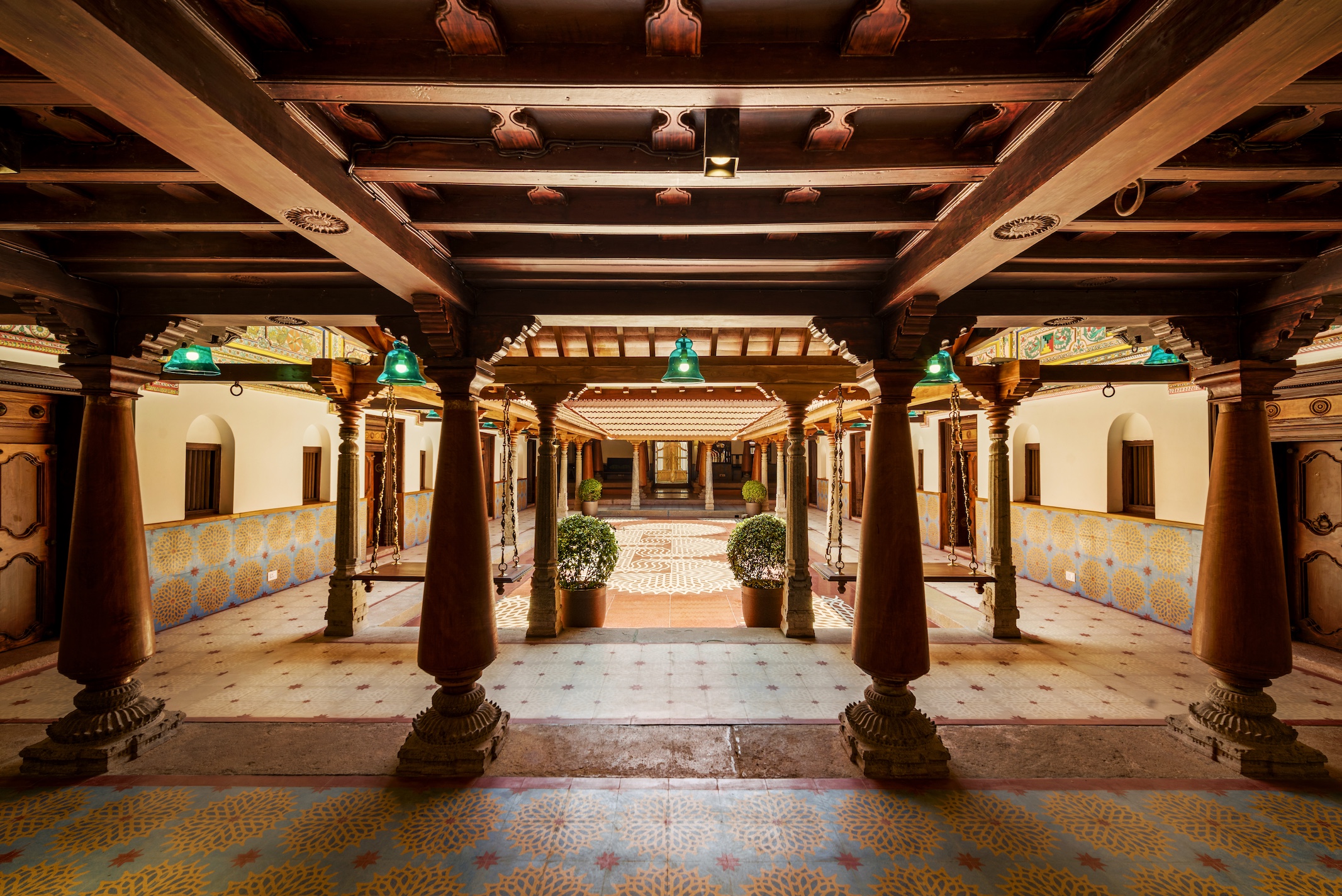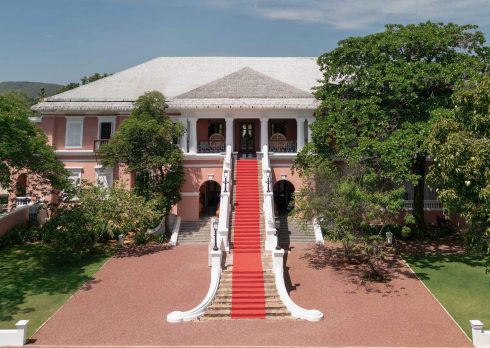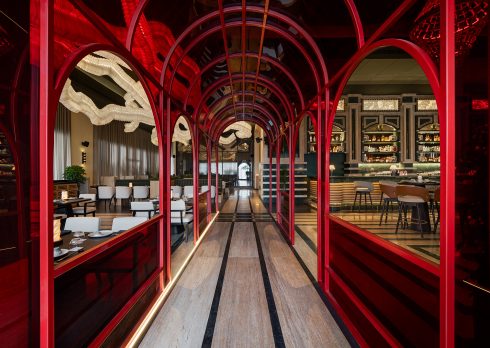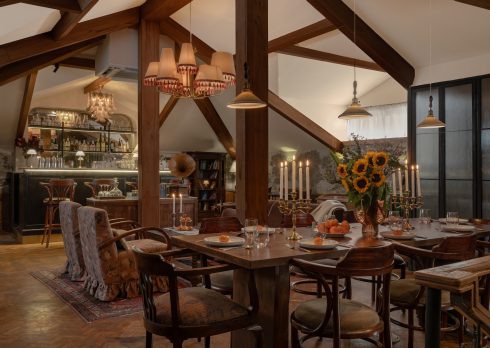The Lotus Palace Chettinad: Witness The Stunning Transformation Of A 17th-Century Manor
Explore The Lotus Palace Chettinad, an amalgamation of many architectural styles paired with boutique hospitality to offer a mesmerising experience of revering South India’s rich history.
In the early years of British imperialism, the Chettinad region of South India was still a dizzying punchbowl of wily diamantaires, mosaic tile artists and antique traders. If you were to wander the labyrinthine alleyways of its sleepy temple towns, past a smattering of nondescript thatched-roof stores and stucco cottages, it wouldn’t be unusual to stumble into the high walls and vibrant façade of a sprawling mansion. One such 17th-century palace is now a thriving heritage retreat in Karaikudi, Tamil Nadu. Owned by the Park Hotels group, ‘The Lotus Palace Chettinad’ is an amalgam of diverse architectural styles drenched in the multi-cultural legacy of Burmese teak pillars, stained glass windows and grandiose crystal chandeliers. From awe-inspiring interiors to aristocratic cuisines, culture and art, a stay at ‘The Lotus Palace Chettinad’ offers an incomparable glimpse into the life and times of bygone opulence.
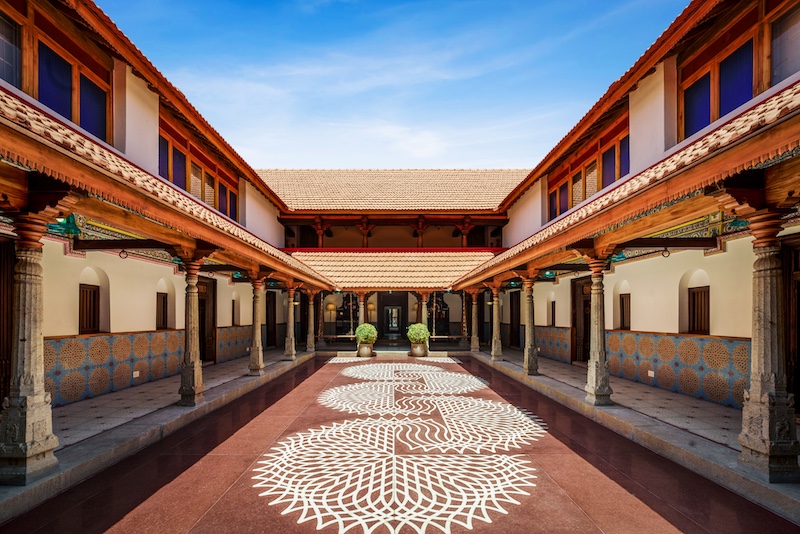
Testament to the munificence of Nattukottai Chettiars—a community of ship chandlers and dealers of spices and gemstones descended from the 14th century Chola Empire—this manor house was given new life by the design intervention of Delhi-based Kaushik Mukherjee Architects (KMA). A glimmering example of adaptive reuse, Mukherjee’s team were astute enough to procure in-situ materials and local craftspeople. Raising doorframes and reapplying a fresh coat of herbal pigment upon the walls, the 230-year-old structure underwent a cultural facelift to re-emerge as a boutique hotel.
Getting There:
The bustling city centre of Karaikudi is easily accessible by train via the Chettinad Railway Station (2.3 kilometres). The nearest airport is in Tiruchirappalli. Once you land, an hour and a half drive through idyllic, provincial scenery takes you to this royal estate adorned with intricately carved frescoes, vibrant Athangudi tiles and a kolam inlay deftly embedded into the open-air courtyard granite floor.
Also read: The Stunning Revival Of Odisha’s 200-Year-Old Rambha Palace By Architect Channa Daswatte
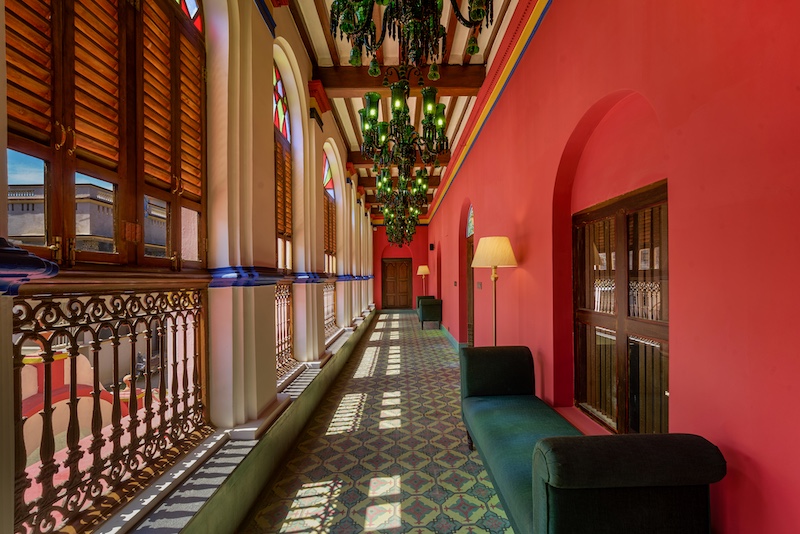
The Architecture Is A Restorative Take On Maximalism
The sensory odyssey begins as soon as you walk in through the grand entryway featuring a formidable wooden door that has been painstakingly moulded from a single block of teak. Astonishingly, each side of this door was sculpted by different artisans, yet their work mirrors flawlessly—a flip of the coin, both sides identical. The open-air courtyard adorned with stone and Chettinad-style wooden pillars, is a subliminal space where every corner of this 17th-century heritage property tells a story, under the eaves of sloping terracotta tiles. The kolam on the floor, emulating the ‘Sahasradala Padma’ pattern, unfurls in a stunning spectacle of a thousand lotus petals. The material vocabulary of its interiors is a palimpsest of imported Burmese timber, Gothic arches and other European flourishes borrowed from Italian Church architecture. This intercultural mosaic of architecture is conspicuous throughout the Chettinad region, which spreads its wingspan across more than 75 villages, of which the prominent ones are Karaikudi, Athangudi, Kanadukathan and Devakottai.
A crucial element in the restoration of the palace walls was an intriguing, age-old egg plaster technique. Blending lime and egg whites with a mixture of red soil, calcium powder and a medicinal herb known as ‘Kadukai,’ proved to be a magical trick for smoother, more durable walls. This indigenous method is known not only for its strength-imbuing prowess but also the potential to regulate temperature, a boon in the relentless tropical summers, elevating climatic liveability.
Also read: Escape To Bhutan With The Ultimate Winter Guide To Wellness, Adventure, And Cultural Immersion
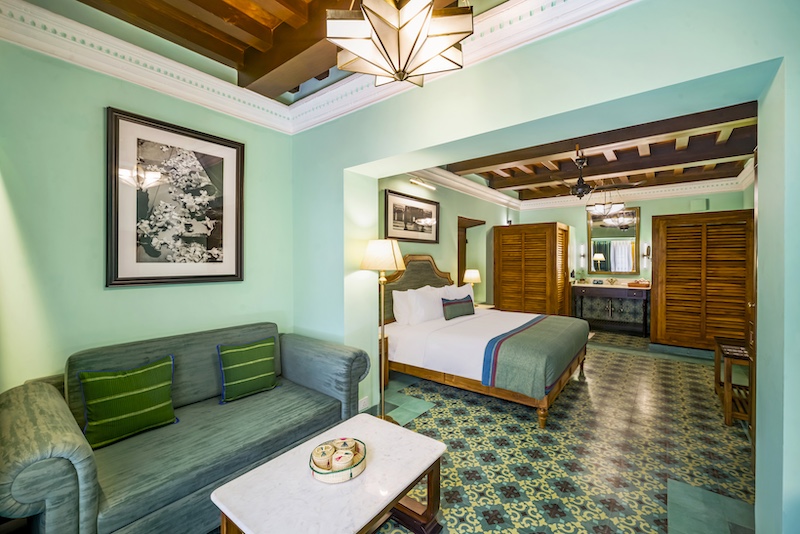
The Heritage Suites Are A Tribute To Local Folklore
Enveloping the circumference of the inner courtyard—fanning across two floors—are 15 carefully restored rooms with teak rafter ceilings, handwoven fabrics from local craft clusters and Art Deco statement lights. For Mukherjee’s team, designing the bedrooms on the upper floors was a cakewalk compared to the chambers on the ground floor flanking the courtyard, which were originally intended for storage. The charmingly hypnotic Athangudi tiles could not be used in the upper bedrooms at all, as Mukherjee’s team deemed it to avoid exerting an excess load upon the wooden ceilings in the suites below. KMA’s design team laid customised teak tiles, which delightfully recreated the Athangudi patterns. For the soft furnishings in these suites, Mukherjee commissioned the M.Rm.Rm Cultural Foundation—a non-profit community engaged in grassroots-level efforts towards skill development among local village women and the revival of ancestral weaving techniques. The unforgettable Chettinad checked pattern adorns all curtains, cushion covers and bed linen across the bedrooms, harkening back to the Kandangi cotton sarees with thick contrasting borders and earthy vegetable dyes.
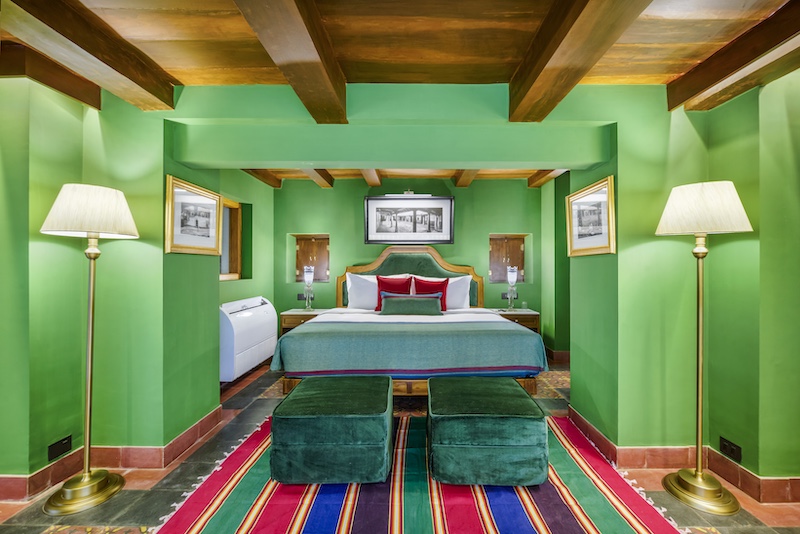
One of the logistical challenges the KMA team ran into was finding the right way to integrate the plumbing in some of the bathrooms; all the pipes could not be chased through the walls as this would weaken the original structure. Therefore a deliberate design choice to use auspiciously gleaming brass and ceramic fittings meant that exposed pipes were also copacetic with the period style of the building. Mukherjee also chose a jewel-tone tile, in the shade of emeralds that were favoured by the Chettiar women, to lend the bathrooms an inescapable sense of glamour.
The poolside ‘Oorani’ suites embrace a refreshing medley of turquoise green and hints of black all over its walls. ‘Oorani’ typically refers to a shallow catchment reservoir or pond, in local verbiage and indeed, the rooms are a source of visual relief for the guests. A menagerie of vintage photographs, Art Nouveau-centric lamp shades and other curious artefacts can be found here, annexed from the personal collection of Priya Paul, Chairperson of Apeejay Surrendra Park Hotels.
Also read: Amaraanth In South Goa Embraces Slow Travel, Curated Art, Design, And Quiet Luxury
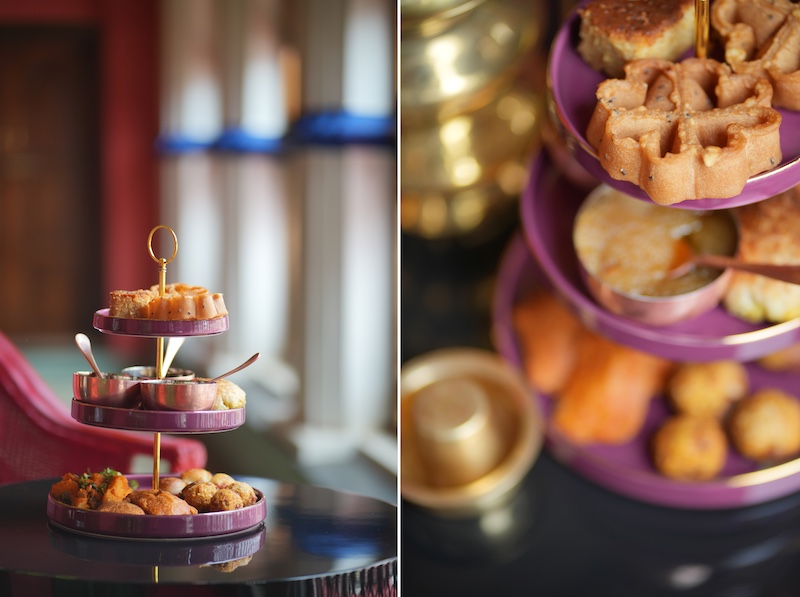
Nostalgic Cuisine In The Thick Of History
If you are missing home-cooked food, all of it churned out from farm fresh and foraged produce, then dining at 86 Pillars should be on your itinerary. Nestled within the second courtyard, its interiors embody the minutely-detailed lavishness of Chettinad architecture—its solid wood columns on stone bases, elaborately embellished timber brackets and a skylight that lathers the room in foamy, natural light. Décor accents like the original Raja Ravi Verma influenced stained glass panels, each depicting a unique scene from the Ramayan adorn the walls, were an unmissable standout feature here.
Every meal here is a ripple through time, where heritage and culinary artistry converge. Highlights on the menu were the lipsmacking Kaalan Keti Kuzhambu mushroom curry and the sinfully aromatic Karaikudi Attu Kari Kuzhambu lamb curry.
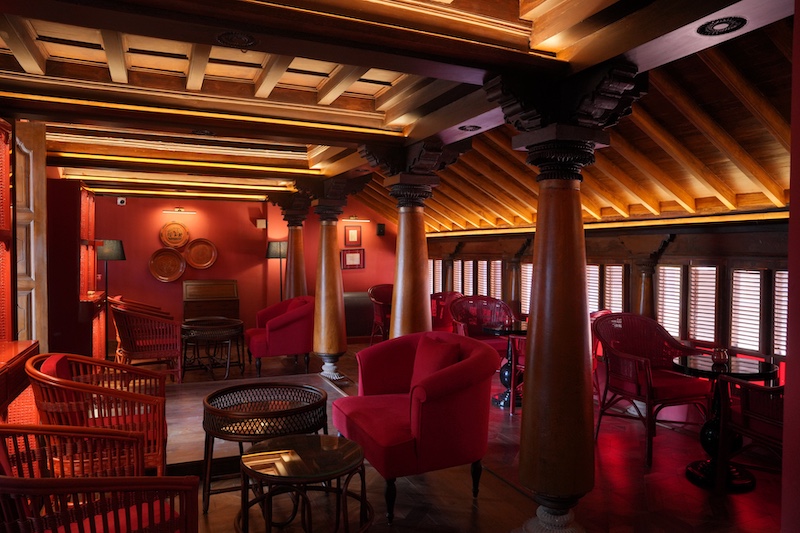
Then for an exclusive high tea experience, The ‘Red Room’ appears as mysteriously inviting as the name suggests, awash in a bedazzling shade of red Burmese lacquer. This colour reminisces upon the immaculate lacquerware boxes passed on as dowry from one generation to the other, among the Chettiar moneylending families, changing hands only between the female descendants. To offer leisure for the palace’s in-house guests, the lounge space within ‘The Red Room’ features a wide selection of books and board games, creating an intimate sanctuary within the property. Winding down in 1795, named after the year the Palace was reputedly constructed, the day’s inhibitions can be carelessly shirked off with a curation of inventive cocktails, light snacks and Asian-inspired bites in this cosmopolitan watering hole on the property.
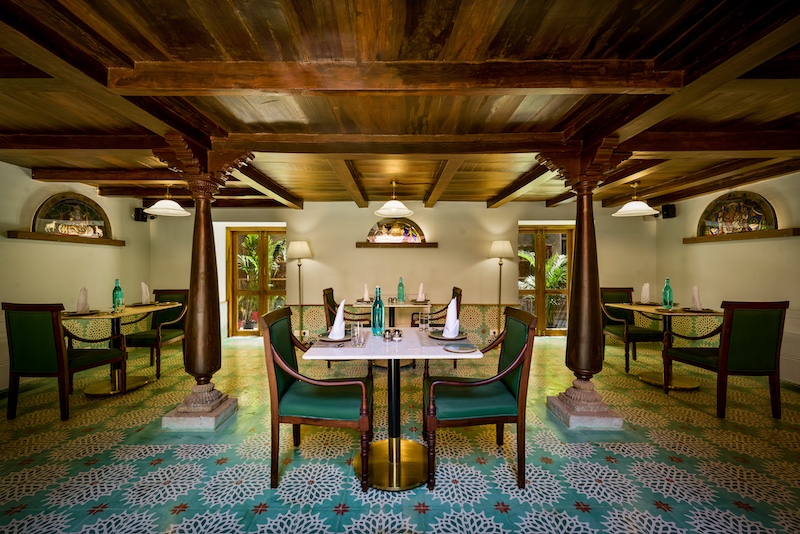
Curating Your Heritage Walk Around The City
Beyond the opulent palace walls, a world of enthralling experiences awaits. In Karaikudi, a stroll down Muneeswaran Koil Street is a must—its workshop ateliers, brimming with archaic brassware, paintings, and pre-loved furniture, are a haven for treasure-hunting connoisseurs. As dusk settles, the sleepy town of Kanadukathan comes alive in a quiet, almost cinematic splendour.
With more than 10,000 Chettiar mansions—or ‘periya veedus’ as the locals call them—lining its streets, the town offers a time capsule into the olden days of architectural grandeur. A short journey away, the village of Athangudi is well worth the visit. Here, kilns and factories churn out the region’s eponymous tiles, their vivid oxidised colours and distinctive geometric florals a joy to witness in real-time.
For those drawn to the art of handloom weaving, the Sri Mahalakshmi Handloom Weaving Centre is an essential stop. One of the region’s most reputed weaving centres, it continues the graceful craft of cotton and silk sarees on shuttle-pit handlooms, preserving a tradition that speaks of timeless elegance.
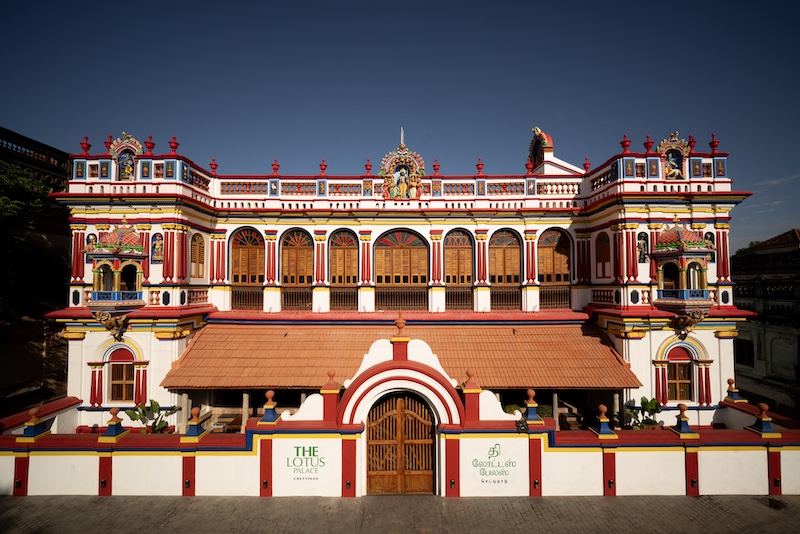
As the sun retreats over the loamy terrain of Thirumayam Fort—steeped in the history of the Polygar Wars between the audacious Palayakkarars and the British East India Company—its walled citadel, Hindu shrines, fortress ramparts, and lingering English cannons form a striking panorama. It is a fitting final vision of Chettinad, a land where history, craft and culture intertwine in a seamless, evocative tapestry.
Final Thoughts
Chettinad’s architectural splendour is more than an aesthetic marvel—it is a testament to a legacy of craftsmanship, cultural exchange and an unwavering reverence for detail. The intricately carved wooden doors, standing as silent custodians of history, the decadently patterned Athangudi tiles—reminiscent of Portugal’s azulejos—and the decorative painted stone friezes all come together in a living epitome to the grandeur of Chettinad palaces, lovingly preserved and reimagined. In every carved pillar and every play of light through stained glass windows, the spirit of this land endures—waiting to be discovered, admired and carried forward into the future.
DP Loves
#1 The ‘Red Room’ is reserved solely for in-house guests, embellished with brass antiques, walls daubed in red Burmese lacquer and intricately carved pillars.
#2 The Library, is a romantic gallery running along the façade, with louvered windows overlooking the rustic town of Kanadukathan.
#3 The luxurious 5-course gourmet dining experience by a beautifully set, candle-lit poolside table under a pergola-shaded deck at ‘Aqua’.
#4 ‘Aura,’ the luxury spa, featuring signature therapies, organic body products and a tranquil shower room accompanied by a built-in steam unit.
#5 The regal charm of the palace suites filled with vintage finds and layered with rich heritage and tribal weaves transform the retreat into a haven for reflection.
#6 Breathtaking views of the village roofscapes from The Sunset Terrace, where diaphanous hues flood the sky as day turns to night.

